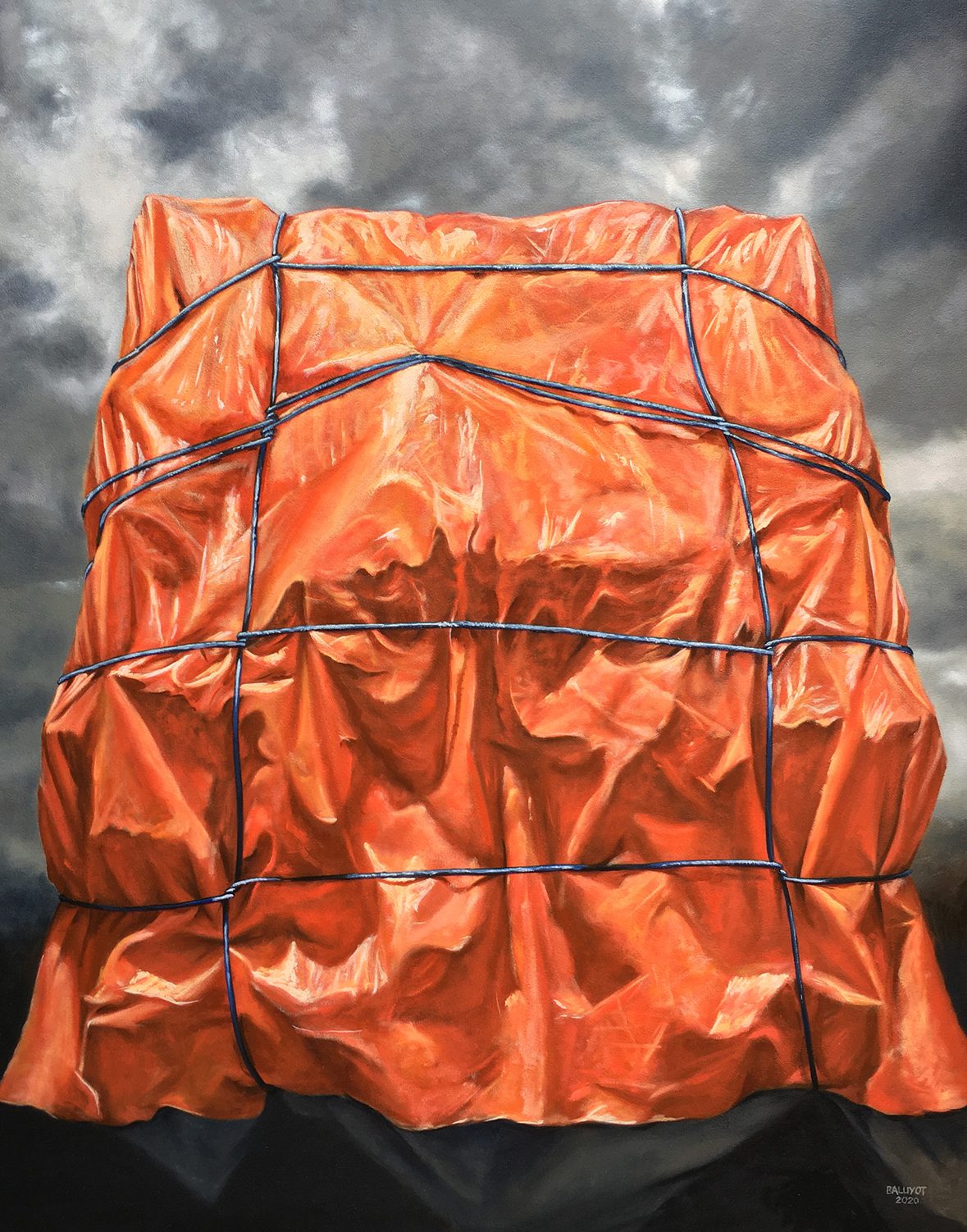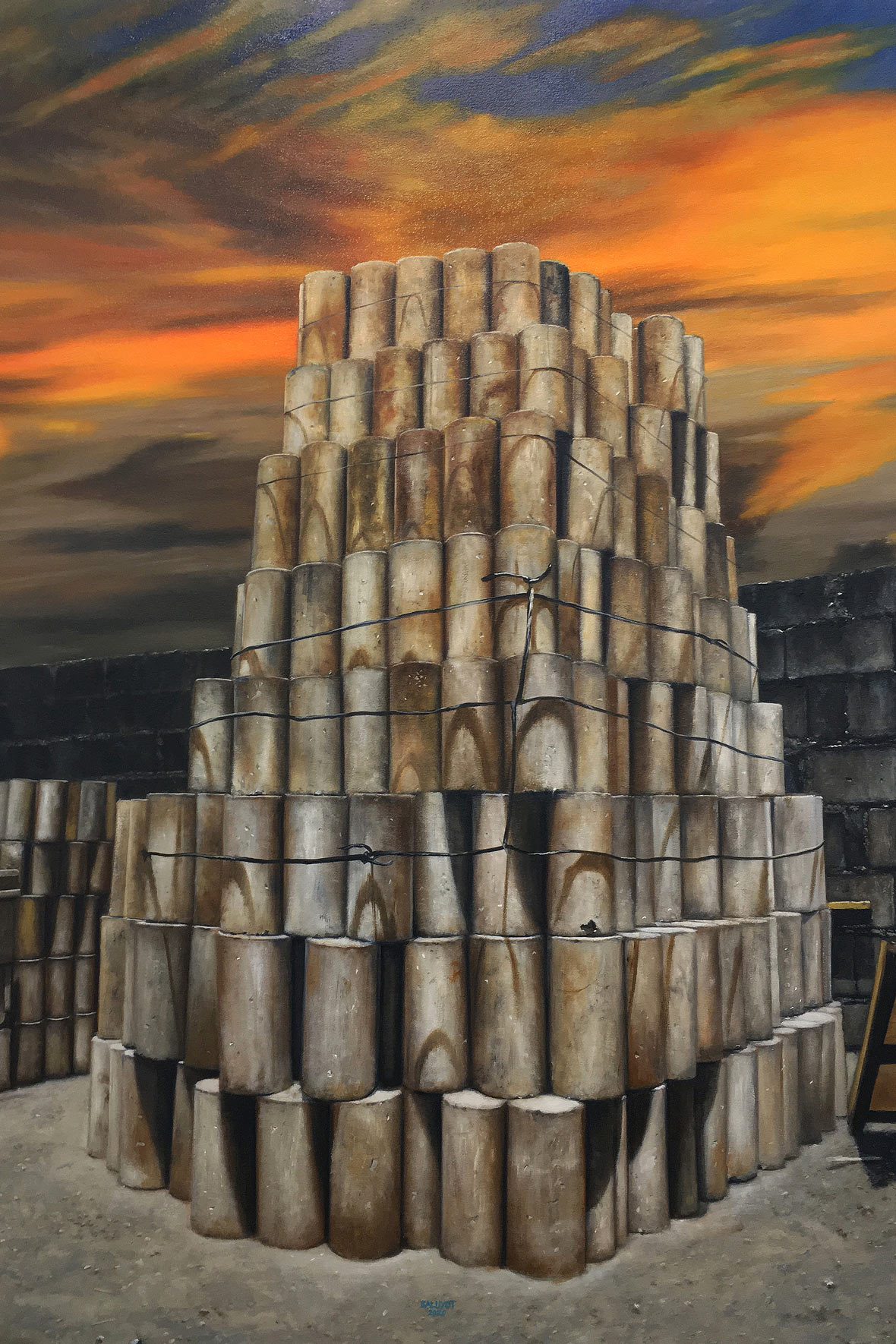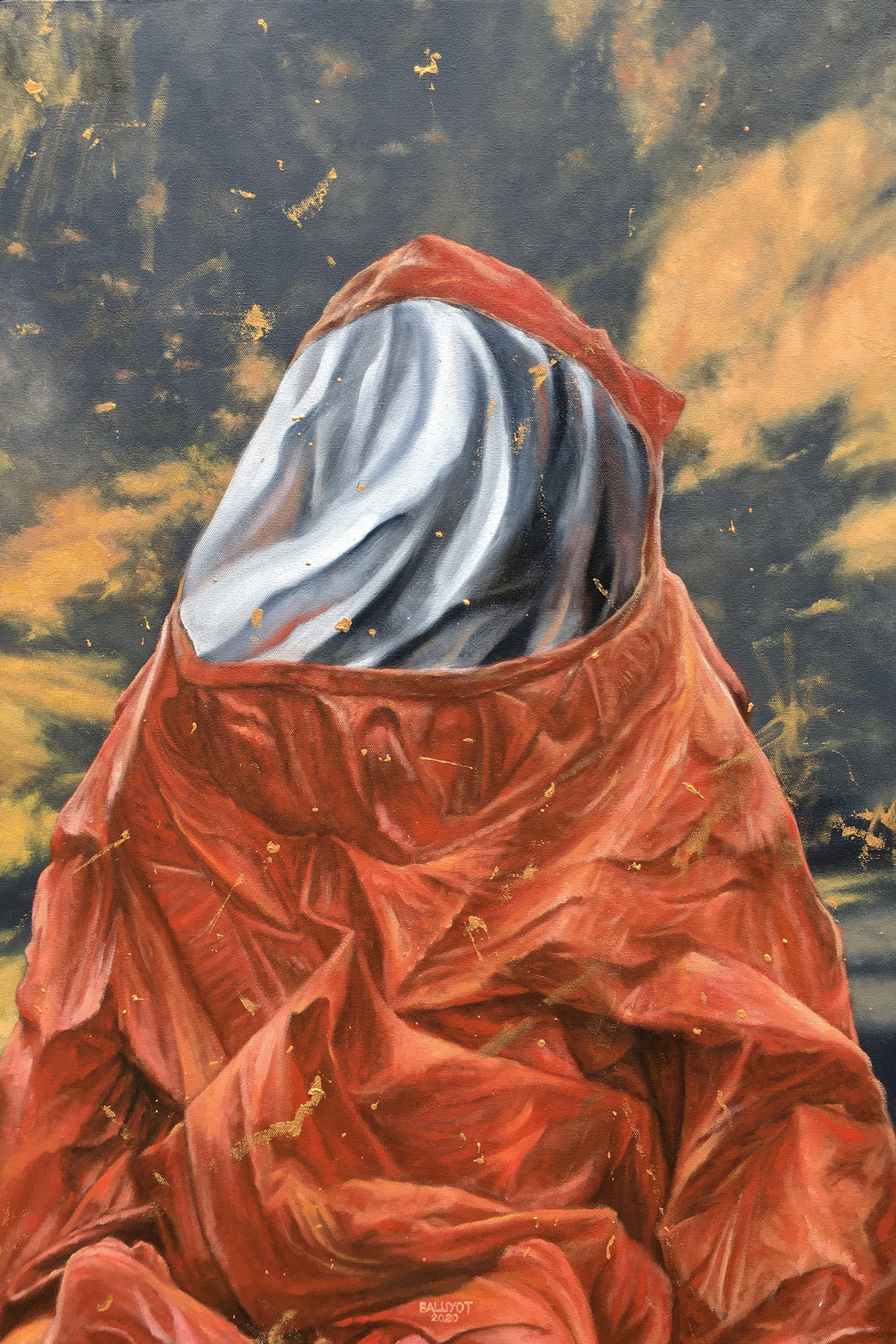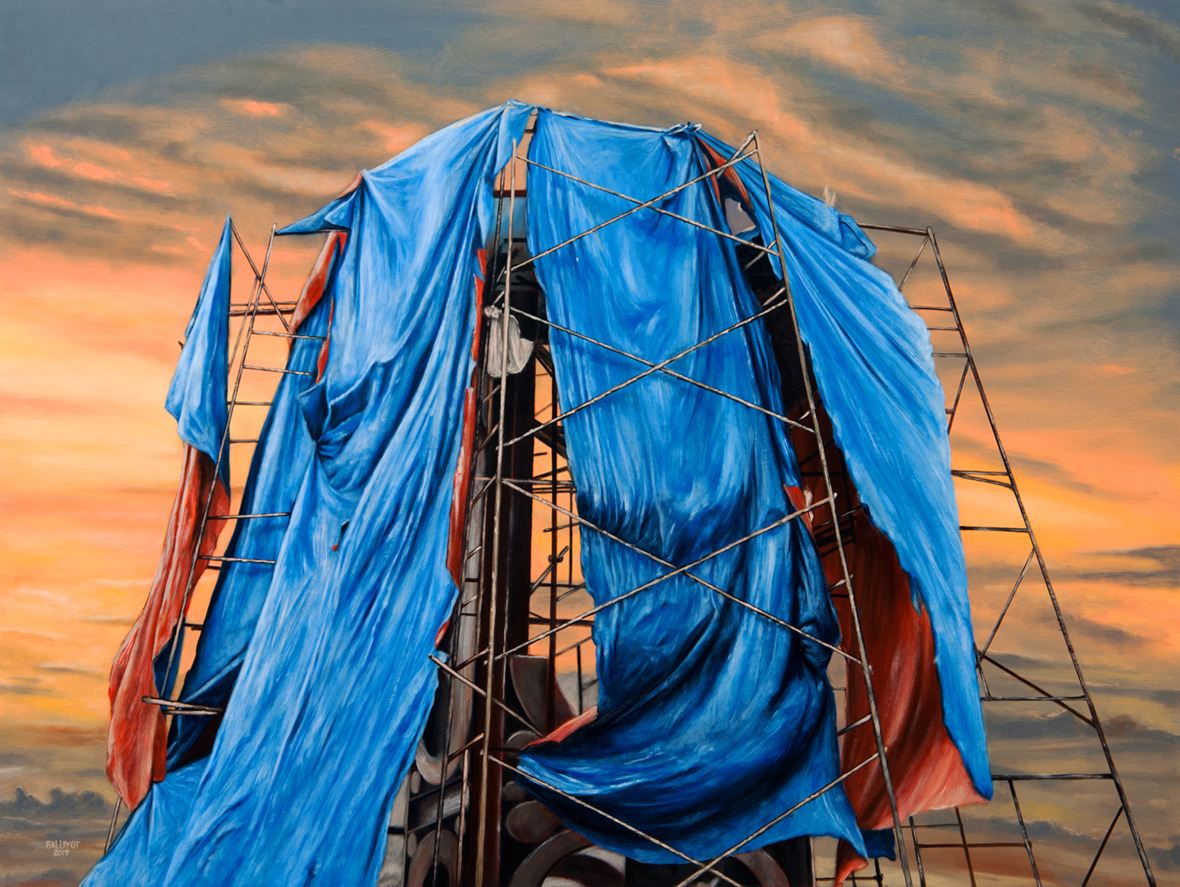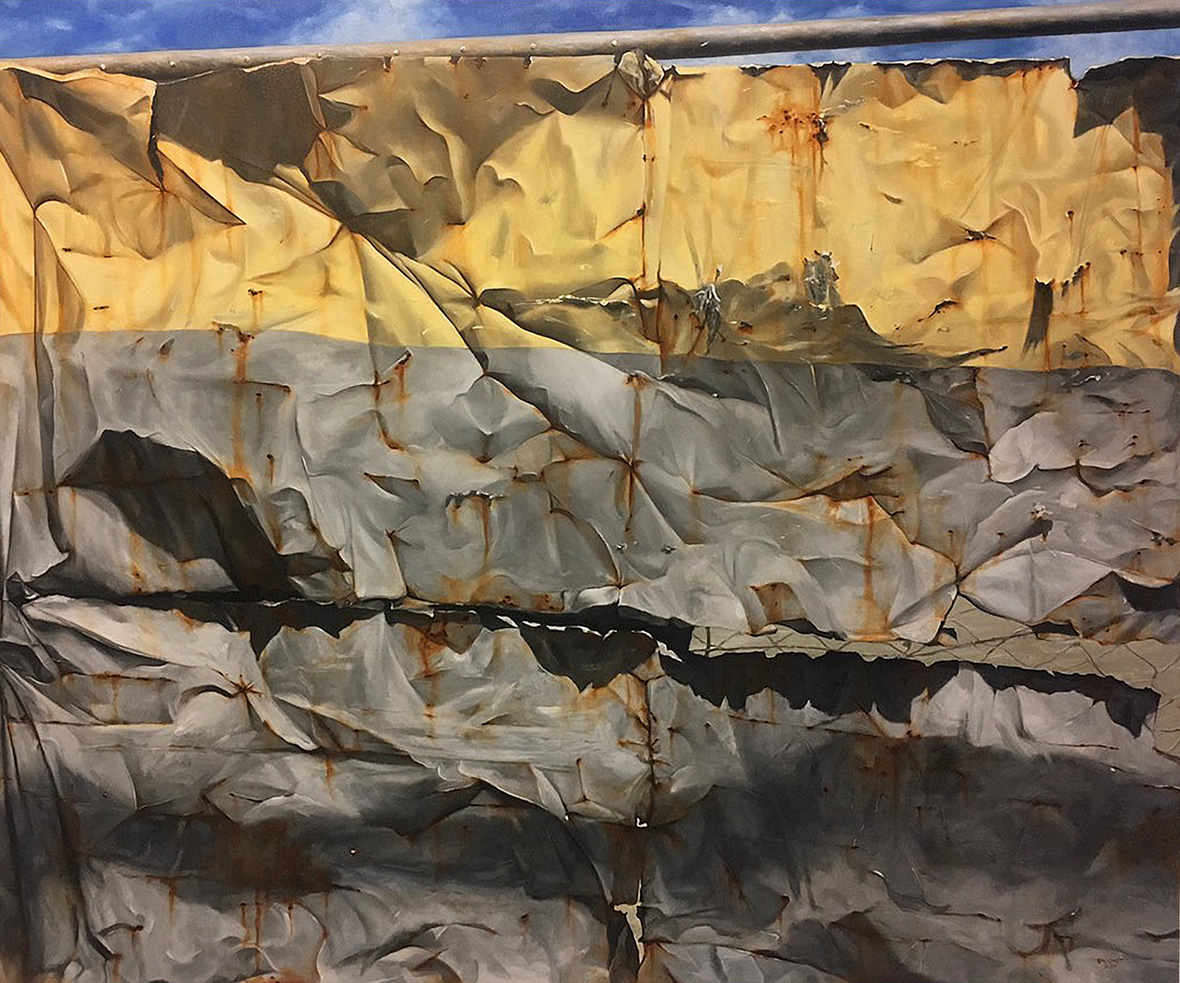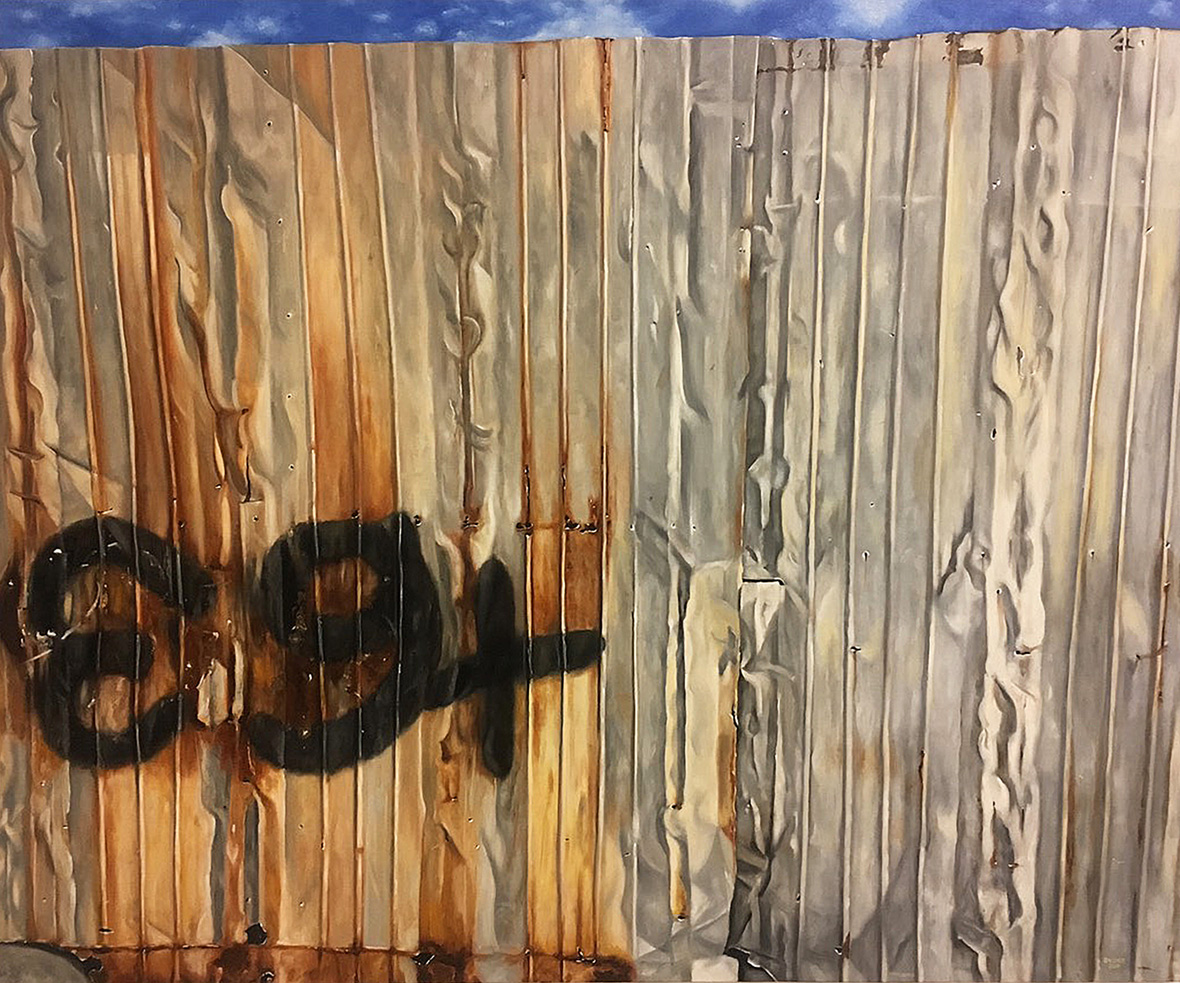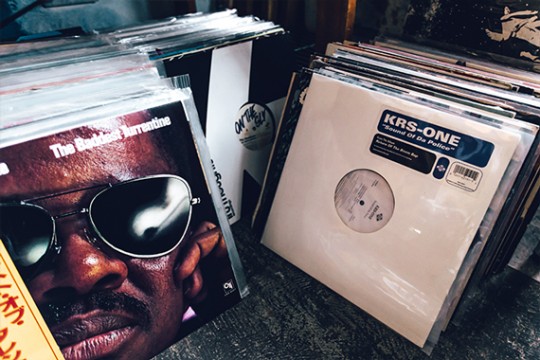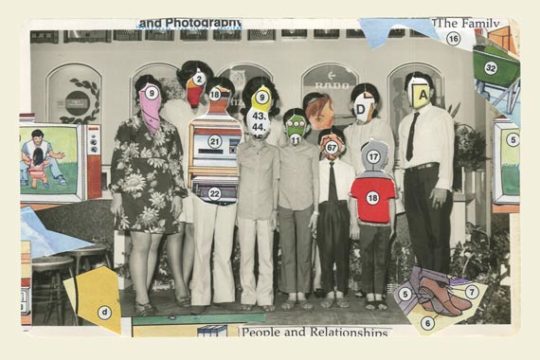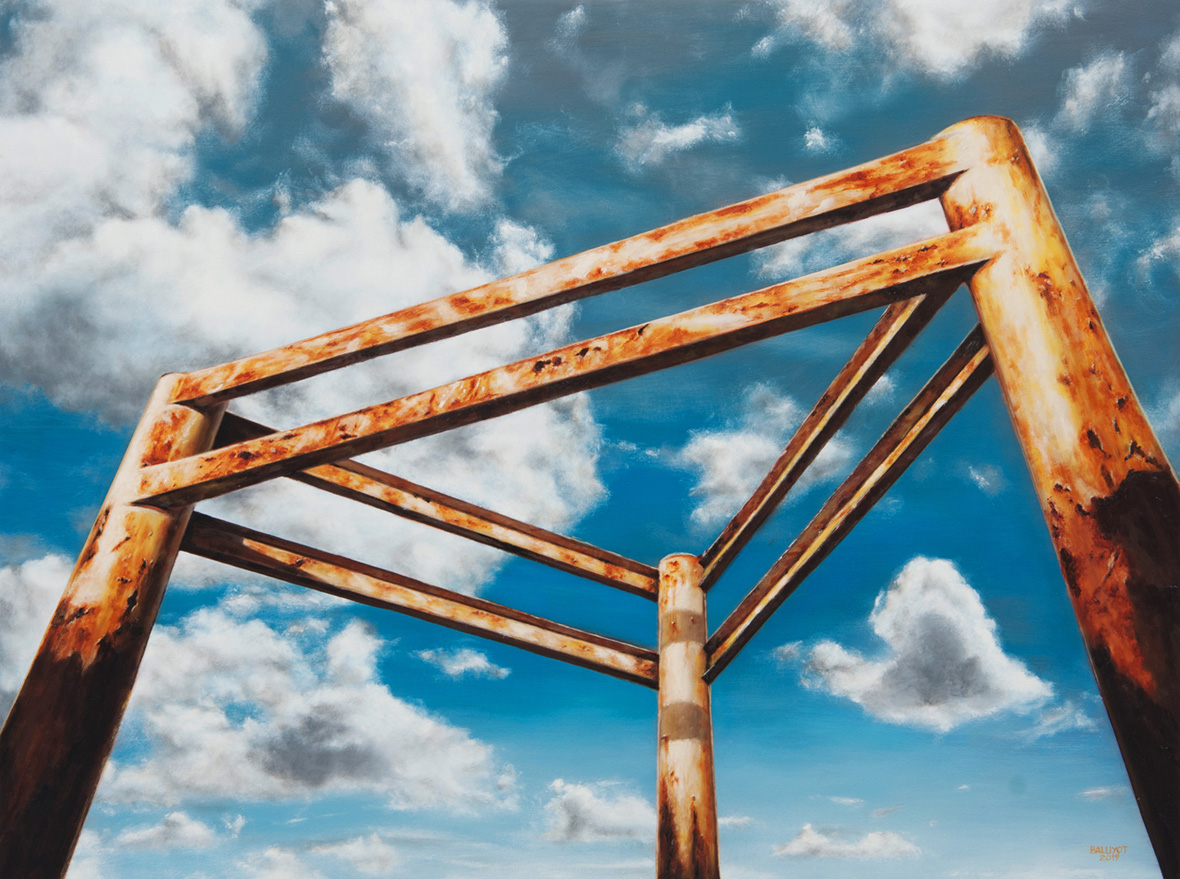
You’d be hard-pressed to find a single human face in the recent paintings of Renz Baluyot, but his art is very much about people. Through his depictions of architecture, building materials, and open skies, the Filipino artist meditates on how power, time, and life itself take their tolls on humans. Colonial structures, monuments, and unassuming dwellings in varying states—ranging from the rundown, to the half-constructed, to the pristine—speak to the lives of the people they serve and how time has taken its toll on them.
在菲律宾艺术家 Renz Baluyot 最近的绘画作品中,几乎找不到一张人的面孔,但很大程度上,这些作品探讨的主题却正是人。通过描绘各种建筑、钢筋水泥和无垠苍穹,他思考着力量、时间和生命本身对人的影响。各种形态的殖民建筑、古迹和简陋的房子,一些已是断壁残垣,一些是烂尾工程,还有一些则装点一新……但每一间都透露出曾住在这里的人们的生活,以及岁月的变迁。
In his new series, Empire, Baluyot focuses on a post-COVID society, one left in ruin. Once glamorous structures such as spiral staircases are dismantled and discarded in different outdoor settings. The return to the Earth they came from in an infinite cycle is hinted at through the infinity-shaped position they lay prone. The skies glower with fiery discontent as the sun sets on into this new normal. In the related piece It’s Nice Outside, a crumpled hazmat suit defines its owner through the artifacts surrounding them.
在他的最新作品系列《Empire》(即“帝国”)中,Renz 着眼于后疫情时期一片残垣的社会。曾经宏伟华丽的建筑结构(例如螺旋楼梯)被丢弃在各种户外环境中。倒塌的螺旋楼梯呈现“ ∞ ”的无穷大符号,暗示着重归大地,循环不息。背景的日落,寓意进入新常态的社会,而炽红的天空仿佛在愤怒地凝视这一切。而在相关作品《It’s Nice Outside》中,一套皱巴巴的防护服和周围的物品,则隐约透露出其原来主人的身份。

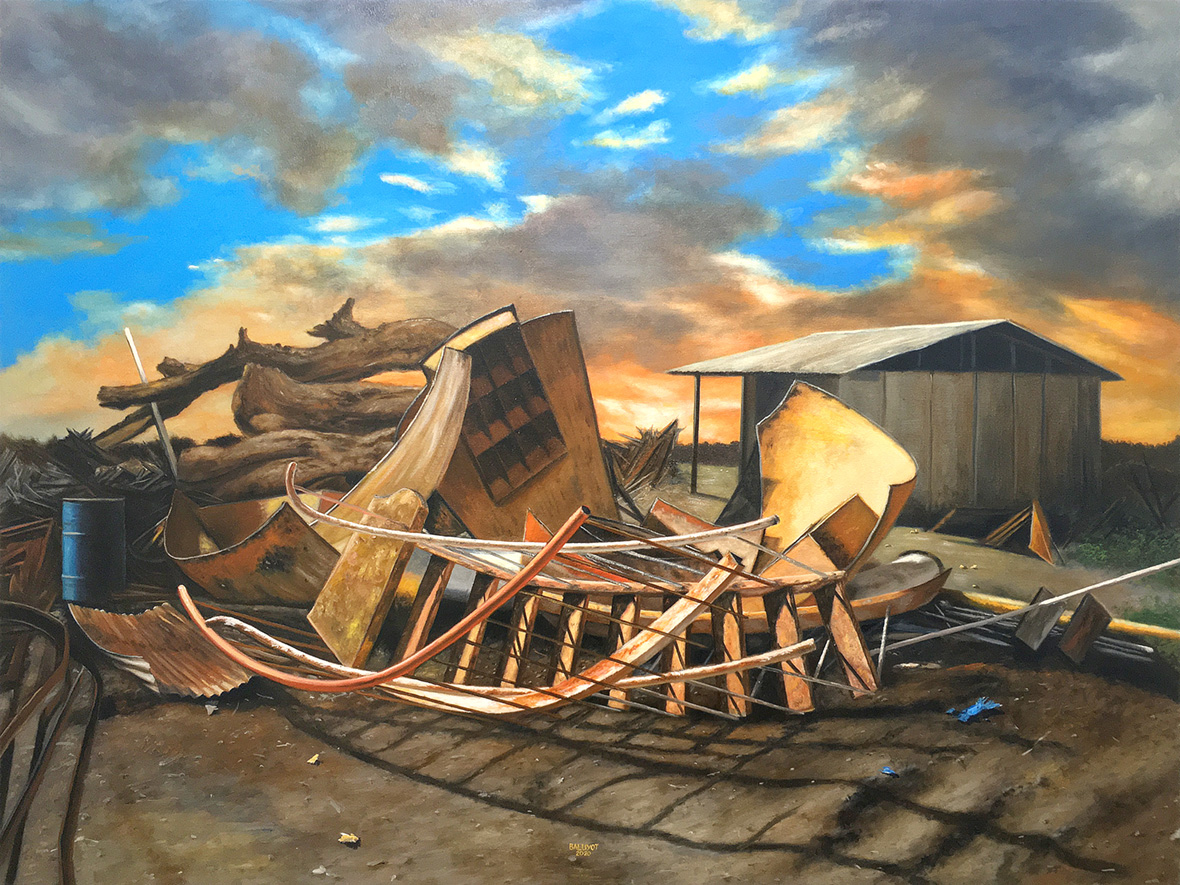
The somber mood is a response to current events. In previous works, open blue skies with streaks of gleaming white clouds often gave the feeling of endless possibility. The use of the sky adds depth and scale to his paintings, creating a universe for the built structures to inhabit. But it’s also a form of personal expression, a way for Baluyot to imbue the works with his own feelings. “Noontide Hagonoy was a depiction of my family’s hometown as I remember it as a child,” he says. “The sky there just feels different to me.”
这种忧郁的情绪折射出了近期世界所发生的时事。相比之下,他之前的作品中,开阔的蓝天,布满亮眼的白云,让人有一种一切皆有可能的感觉。天空能让他的画有更多的深度和层次,为他笔下的建筑物提供存在的空间。但与此同时,它们也是一种个人表达,承载着 Renz 的个人感受。他说:“《Noontide Hagonoy》画的是我小时候生活的家乡。对我来说,那时的天空都是不一样的。”
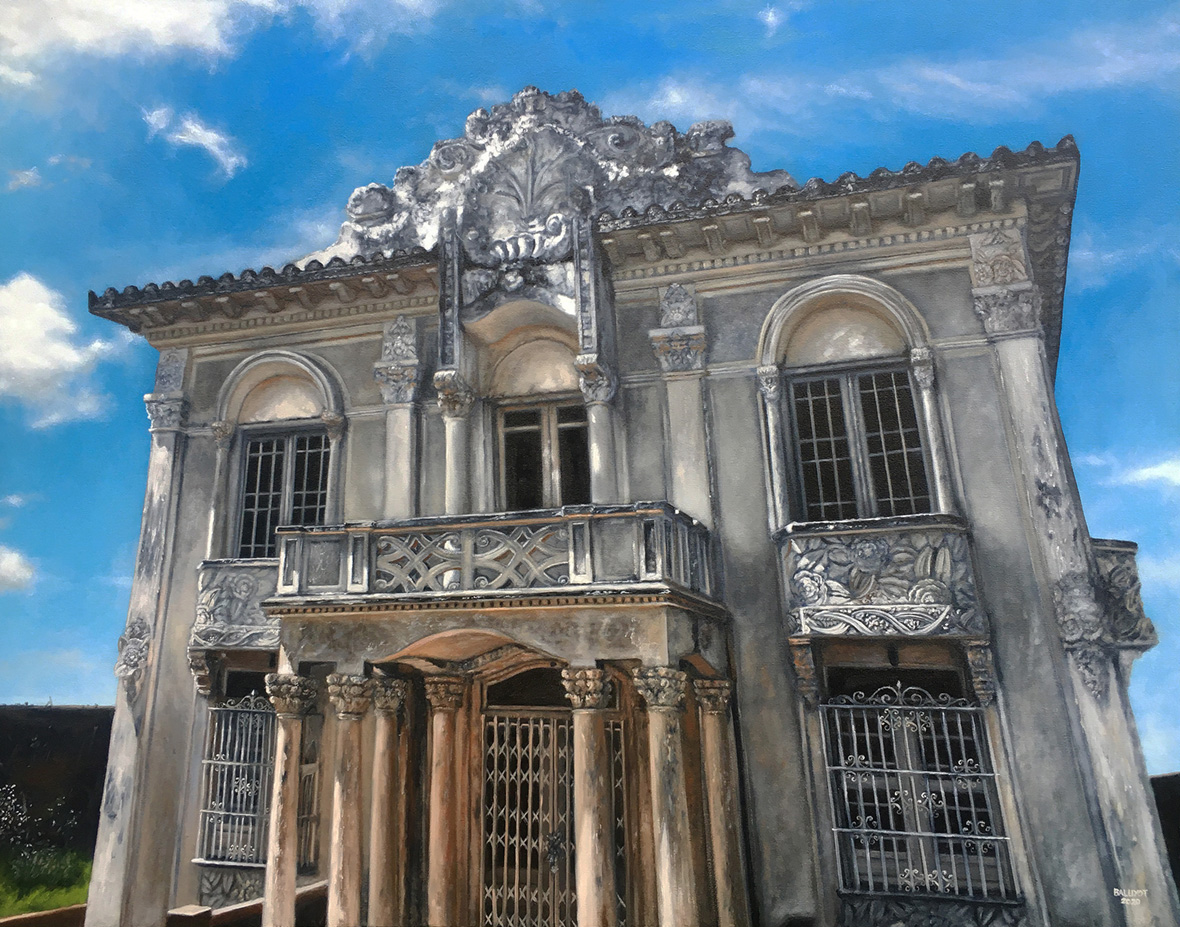
Noontide Hagonoy captures a range of structures, from a Spanish colonial mansion, to a more humble abode built from corrugated metal sheets, to a mundane water tower plastered with an American soda-brand advertisement. One constant theme throughout the series is how aged all the subjects are. “My exploration of urban decay is about how politics and power deeply affect and degrade the places we live,” he says.
《Noontide Hagonoy》系列描绘了各种各样的建筑结构,既有西班牙殖民时期的豪宅,也有用金属波纹板建造的简陋房屋,还有贴满美国苏打水广告的普通水塔,它们的共同点是,所有建筑都充满了历史感。他说:“我对城市衰败的探索,主要围绕于政治和权力如何深刻影响和恶化人们居住地。”
In the series, everything feels frozen in time, which is necessary since the area (a low-lying, river basin just north of Manila) may become fully submerged by water due to a combination of sinking ground caused by overuse of well water, river mismanagement, and sea-level rise. Flooding is already so common they celebrate some holidays in knee-high water. All of Baluyot’s paintings in the series, however, gaze upward with the ground out of frame, suggesting a forced optimistic perspective. “These towns and cities are forced to adjust to the capitalist notion of development. What will we make of ourselves when the places tied to our identities are gone?”
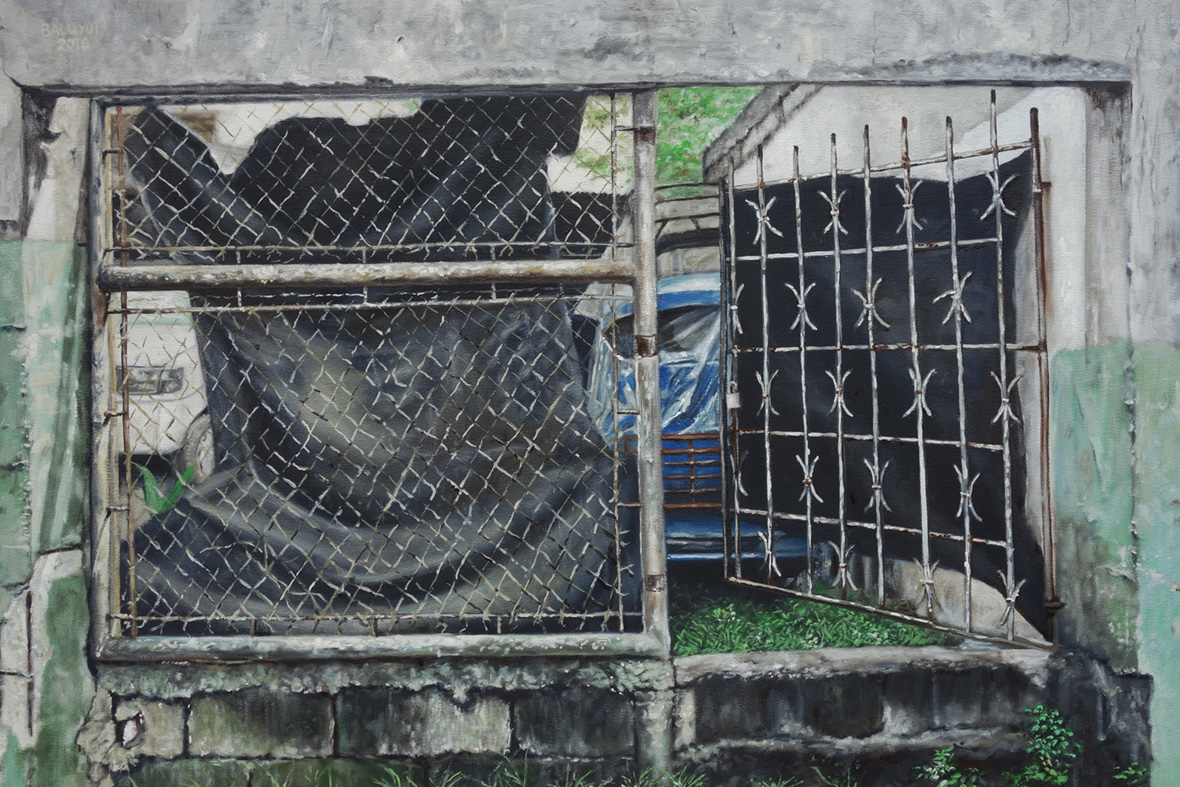
The story told by decay, like history etched into the surface of our lived environment, is most prominently explored in Baluyot’s Fragile Borders show. His up-close images of deeply weathered sheet metal and steel gates used in low-income sheltering focus on those most at peril. “Architecture changes through time over years and decades, serving as a container of memories,” he notes. “I think the maturity and transformation, the way they represent the passing of time, suggests that they are archives, maybe even material history. No matter the object or architectural style they follow.” Each dent and wrinkle is filled with years of rust and grime, a symbol for the accumulation of neglect by society.
这些残石剩础所讲述的故事,如同把历史镌刻于人们生活环境的表面,这也是 Renz 的《Fragile Borders》展览所探索的主题。在这个系列中,他描画了许多残旧的金属板材和铁闸的特写,这些都是一些贫民窟里的常见建筑材料。他指出:“建筑会随着时间流逝而变化,成为承载记忆的容器。它们的老化和变迁,展现着时间的流逝,因此,可以说它们是历史的档案,甚至可以是物质的历史,无论它们原本属于什么物件或有着什么建筑风格。”每个凹痕和皱褶都布满多年的锈蚀和污垢,代表着被社会遗忘的岁月。
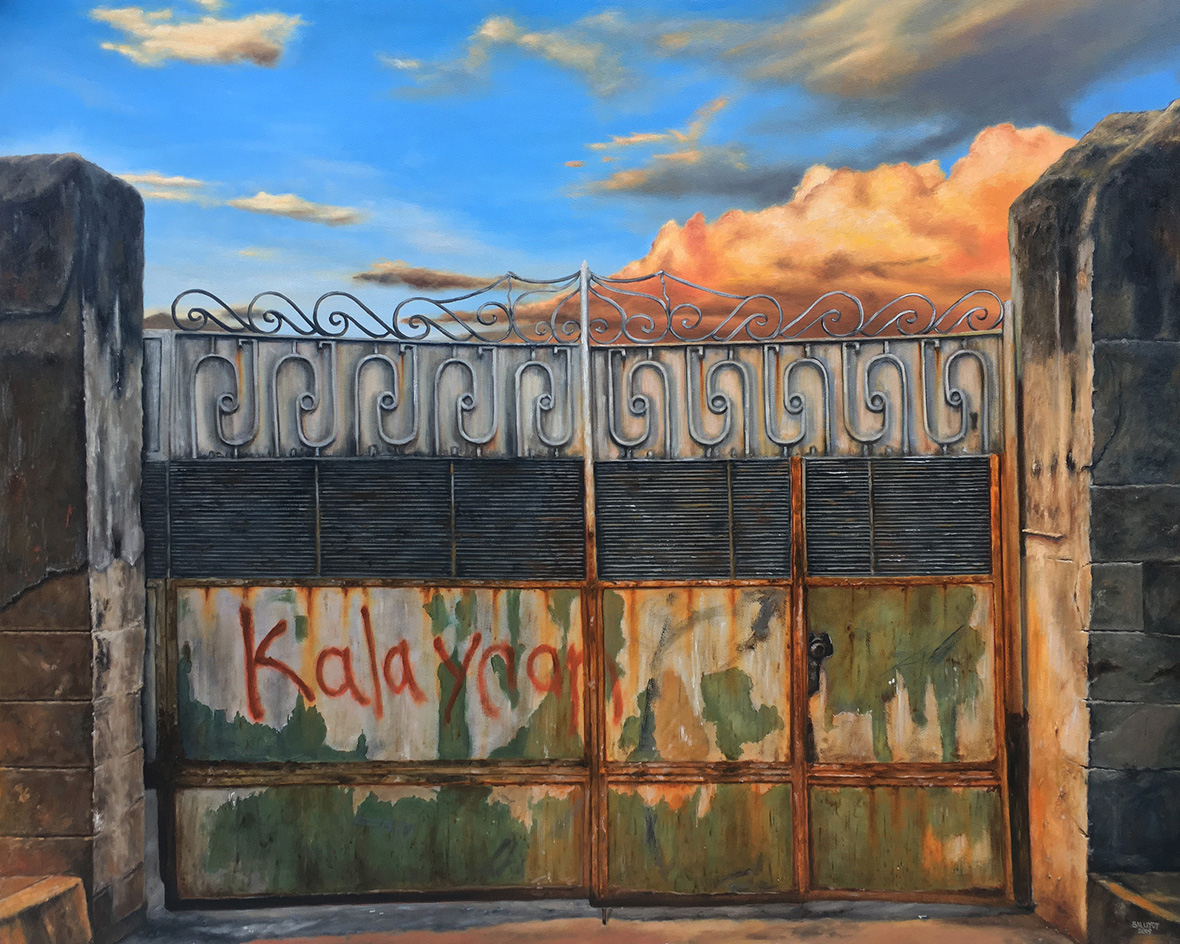
Baluyot’s most indelible piece might be Almost There!, which seems to distill his overarching messages. The painting portrays a simple residential gate, one commonly seen around the Philippines, battered but still standing strong under an expansive sky. The word kalayaan, Tagalog for “freedom,” is crudely spraypainted across its exterior. “The struggle for genuine freedom is weathered and old from all our country’s countless knocks and bids over the centuries up until today,” he says. “But I believe that one day soon, after enduring the stormiest weathers, we Filipinos will enter this gateway together.”
Renz 最令人印象深刻的作品可能是《Almost There!》,这幅作品凝结着他的主要艺术理念。在这幅画中,他描绘了一种菲律宾常见的住宅大门,这扇门虽然饱经风霜,但在广阔天空下,仍然屹立不倒。门上胡乱地写着他加禄语 “Kalayaan”(意为 “自由”):“一直以来,菲律宾人们为了争取真正的自由,数百年来不断艰苦抗争,历经风风雨雨。但我相信,在经历最剧烈的暴风雨,菲律宾人必定能踏入自由的大门。”
Like our stories? Follow us on Facebook and Instagram.
Website: www.renzbaluyot.com
Instagram: @renz.baluyot
Contributor: Mike Steyels
Chinese Translation: Olivia Li

